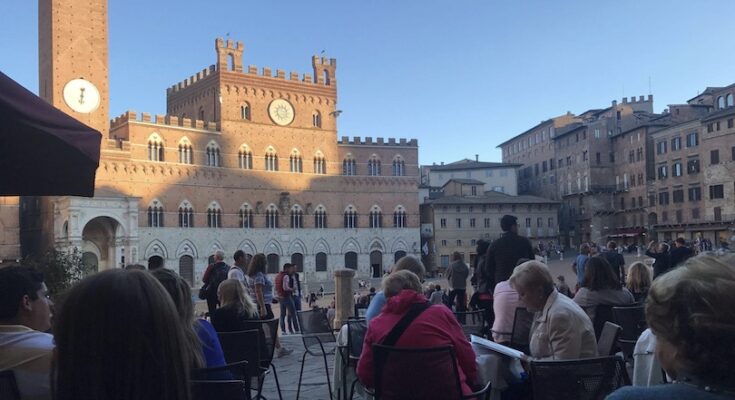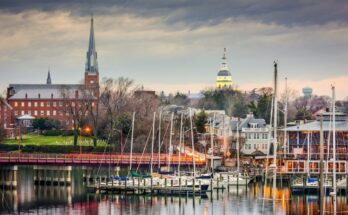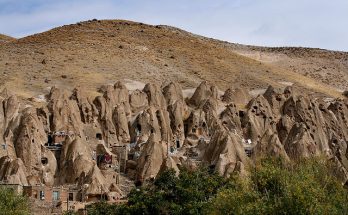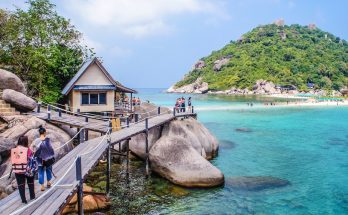A quick search of Tuscany, and you’ll be swooped into a plethora of information about Florence, the region’s crowning jewel. And for good reason – with its shimmering Duomo, outstanding art scene, and Renaissance architecture attracting between ten and sixteen million tourists each year.
However, there are plenty of other cities worth visiting in Tuscany, from Arezzo to Livorno to Pisa and, my personal favorite, Siena. On a recent trip to Tuscany with my family, Siena stood out as one of the most memorable places in Italy.
We spent a week exploring the countryside, staying at a historic villa in a small Tuscan village, and finishing it off with a few nights in Florence. After two days of exploring the heart of Tuscany’s biggest city, we decided to take a day trip to the medieval town of Siena.
In this post, we’ll cover:
A Slice of History

Siena is located in the middle of Tuscany, about equidistant between Rome and Milan. Set on a hill overlooking the rolling countryside, the historic town totally encapsulates the essence of Medieval Italy. Founded by the Etruscans in the first century BC, the city flourished as a Roman colony before it evolved into a bustling Medieval state.
Throughout the Middle Ages, Siena was a formidable rival to nearby Florence, as the two cities competed against one another on economic, cultural, and political grounds.

The 13th and 14th centuries were Siena’s most prosperous, and the iconic Torre del Mangia stands as a testament to this golden age. A couple hundred years later, after plagues and political issues, Siena finally submitted to the rule of Florence.
Modern-day Siena is committed to preserving its medieval character, and a quick visit to the city was able to transport me a few hundred years back in time.
Traveling from Florence to Siena

After a slow morning in Florence, indulging in a cappuccino and a cornetto under the shadow of the Duomo di Firenze, we headed to our Airbnb to pack up for the day. We rented a car for our Tuscan adventure since there were five of us and we had plans to explore parts of the countryside which public transport doesn’t reach.
We rented our car at Fiumicino International Airport in Rome when we arrived in the country. The SUV cost us around $50 per day. This price will depend on the time of year, rental company, and type of car. Always do your research and weigh up options between car rental companies such as Avis, Hertz, and Europcar.
The journey was a beautiful one and took around an hour and a half. Parking in Siena can be a bit challenging since the town is so small. We parked in a public parking area around the base of the village and took an escalator into the historic town.

There are three main pedestrian escalators in the city. The Risalita Stazione-Antiporto-Porta Camollia carries visitors from the train station, another that takes you into the Piazza del Campo, and the Risalita di Santa Caterina, which transported us from our parking lot at Santa Caterina to the Piazza del Campo.
If you’re traveling solo or aren’t in the budget for a car rental, there are also several trains that travel between Florence and Siena each day. While I haven’t done this trip myself, I hear it’s a gorgeous journey through the Tuscan countryside. The train takes 1.5 to 2 hours each way and costs between €15 and €30 per person, one direction.
Taking the bus is another option, taking a similar amount of time as the train but costing between €10 and €20 for a one-way ticket.
Opa Si Pass

We arrived a little hot and thirsty and headed straight for the first coffee shop for a mid-morning pick-me-up. The barista at Non-Solo Bar on Via del Porrione prepared us a few perfect coffees for an affordable €2.50 per drink.
With a boost of energy, we made our way through the narrow cobblestone alleyways of the city to explore the main attractions.
First on the list was to get ourselves a single ticket that would allow us to enter some of Siena’s most famous sites and landmarks. The Opa Si Pass costs between €15 to €17 for a full ticket, with reduced prices for children, disabled visitors, and residents or students of Siena University. The ticket is valid for three days, which makes it perfect for those who don’t want to cram everything into one day.
Tickets can and should be purchased online in advance. We made the error of buying our tickets at the ticket office outside the Duomo and spent a regretful forty minutes in a line.
If you’re short on time and aren’t interested in all the museums, you could get a single ticket to enter just the Duomo, for example, for between €7 and €10. However, for just five euros more, we thought it worthwhile to get the Opa Si Pass and try to fit in as many stops on the Opa itinerary as we could.
The pass allows you to access the Siena Cathedral, Baptistery of San Giovanni, Crypt Piccolomini Library, the Museo dell’Opera, the Oratory, the panoramic Facciatone viewpoint, and the Santa Maria della Scala Complex.
Siena Cathedral

First up was the Siena Cathedral, or the Duomo di Siena, as the locals call it. We spent some time admiring the incredible Italian Gothic masterpiece from the outside, taking a few necessary photographs of one of Italy’s most exquisite Gothic buildings. Adorned with intricate carvings and a breathtaking marble facade inspired by geometric patterns, the exterior is just a glimpse of the extravagance inside the cathedral.
Walking into the cathedral is like entering another era. The first thing that captured my attention was the play on light and color. Black and white bands of marble create a striking effect, made even more beautiful by the golden stars scattering the vaulted ceiling and moon embellishments on the geometric floor tiles.

Arguably, the most memorable room in the Duomo was the Piccolomini Library, where the walls are covered with vibrant Pinturicchio frescoes depicting the life of a Sienese pope. The vivid colors interspersed with shimmering gold are a true testament to Renaissance artistry.
I spent some time admiring the scriptures on display, each one more beautifully written than the next, before exploring the side chapels decorated with works of art by Michelangelo, Bernini, and Donatello.
Shoulders and legs must be covered in the cathedral since it is a holy place of worship.
Santa Maria della Scala Museum

We then visited the Santa Maria della Scala museum, which was initially one of Europe’s first hospitals, now converted into a museum. It’s located just across the Piazza del Duomo from the Siena Cathedral and is made up of a complex of smaller buildings connected by narrow passages.
Among other famous sculptures, artworks, and stained glass windows, the church is most well known for its series of frescoes depicting the ‘Life of the Virgin Mary’ from 1398.
We spent about an hour in the museum, but if you have the time, you could easily spend three hours exploring each room, admiring the artwork and archeological artifacts from the Middle Ages.
A Late Lunch, Early Dinner

We set off down the Via dei Pellegrini towards the Piazza del Campo, the iconic shell-shaped piazza in the center of the city, where we looked for a spot to eat a late lunch. When we arrived in the square, it was heaving with activity, with plenty of visitors and locals lapping up rays of sun before the square was left in a shadow.
We settled on Bar Il Palio on the outer edge of the piazza and ordered a few refreshing San Pellegrino’s and some bruschetta to share. Ravenous from a jam-packed day, I ordered a mushroom and truffle risotto. The bruschetta costs around €6 for a portion and the risotto cost €10.

We sat and chatted at the restaurant as the sun dipped below the Torre del Mangia, another impressive Medieval tower we didn’t have time to enter.
If we were to have stayed for dinner, we would have gone to a small cafe a few blocks from the Siena Cathedral called Osteria da Divo. With rave reviews, the restaurant is set in a romantic cavern-like setting and is decked out with frescoes and moody lighting.
Shopping

As the sun set and the city lights turned on, Siena took on an entirely new form. As if I hadn’t already been transported into another era, the glowing street lights created a timeless feel as the city came alive with a different type of energy.
Cafes and bars were packed with visitors spilled out across the streets with Aperols in hand. However, we were on another mission – a shopping one.
We headed towards the Via Banchi di Sopra, Siena’s main shopping street, which is lined with boutiques, brand-name stores, and souvenir shops along both sides. The shops open at 9:30 in the morning and close around 8, which perfectly suited our late lunch / early dinner schedule.
We spent a couple of hours browsing the boutiques, purchased a few tourist favorites, including some small ceramics and olive oils, and headed back towards the parking lot to make our way back to Florence.



